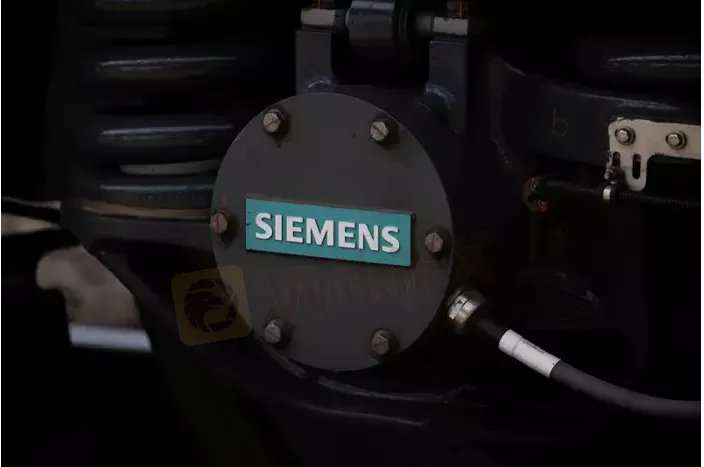简体中文
繁體中文
English
Pусский
日本語
ภาษาไทย
Tiếng Việt
Bahasa Indonesia
Español
हिन्दी
Filippiiniläinen
Français
Deutsch
Português
Türkçe
한국어
العربية
Siemens’ writedown pushes company into first loss since 2010
Abstract:Siemens reported better-than-expected revenues for its third quarter on Thursday as a writedown at Siemens Energy pushed the engineering and technology group into the red for the first time in nearly 12 years.

The maker of industrial software and trains reported revenues rising 11% to 17.87 billion euros ($18.38 billion) – beating analyst forecasts for 17.47 billion euros in a company-gathered consensus.
But Siemens posted a shareholders net loss of 1.66 billion euros after taking a 2.8 billion euro non-cash charge for writing down the value of its stake in Siemens Energy.
The loss, Siemens first quarterly loss since the fourth quarter of 2010, meant Siemens had to cut its full year earnings per share guidance to 5.33 to 5.73 euros per share, from 8.70 to 9.10 euros previously.
Siemens owns a 35% stake in the turbine and wind power company, which has had a troubled two years since spinning off in 2020, with operating problems and losses at its wind turbine division Siemens Gamesa.
Chief Executive Roland Busch said demand was still strong, despite an environment affected by sanctions on Russia, high inflation and ongoing effects from the pandemic.
“We captured significant opportunities in a market environment with ongoing high demand,” he said in a statement.
“Our strong top line momentum continued, with a comparable order growth of 20% since the beginning of fiscal 2022.”
As well as the Siemens Energy charge, the companys figures were also hit by 442 million euro in costs related to its decision to quit Russia following the conflict in Ukraine.
During the three months to the end of June, Siemens said its orders rose to 22.07 billion euros, beating forecasts for 19.82 billion euros. The 7% increase followed a 32% increase in orders in the previous quarter.
Profit at its industrial business rose 27% to 2.88 billion – short of forecasts for 3.02 billion euros.
Siemens, whose products are used to equip factories, buildings and transport networks, is seen as a signifier for the broader industrial economy.
Demand in the European capital goods sector is holding up, Barclays said last week, looking back at the results of other companies in the sector such as ABB and Schneider Electric
Siemens said it has continued to avoid major disruptions caused by supply chain problems, especially around getting enough components, raw materials and logistics.
($1 = 0.9724 euros)

Disclaimer:
The views in this article only represent the author's personal views, and do not constitute investment advice on this platform. This platform does not guarantee the accuracy, completeness and timeliness of the information in the article, and will not be liable for any loss caused by the use of or reliance on the information in the article.
Read more

The Daily Habits of a Profitable Trader
Every professional trader follows a structured approach to ensure they are well-prepared, disciplined, and able to seize opportunities with confidence. Whether you are a seasoned investor or an aspiring trader, adhering to a robust daily checklist can significantly enhance your performance. Use this checklist to check if you are a qualified trader

The Impact of Interest Rate Decisions on the Forex Market
Interest rate changes determine currency attractiveness, influencing capital flows and exchange rate trends. Understanding this mechanism helps investors navigate the forex market effectively.

How a Housewife Lost RM288,235 in a Facebook Investment Scam
A 47-year-old housewife in Malaysia recently fell victim to an online investment scam, losing a substantial sum of RM288,235 after engaging with a fraudulent scheme advertised on Facebook.

A Trader’s Worst Mistake: Overlooking Broker Reviews Could Cost You Everything
In today’s digital age, reviews influence nearly every decision we make. When purchasing a smartphone, television, or home appliance, we pore over customer feedback and expert opinions to ensure we’re making the right choice. So why is it that, when it comes to choosing an online broker where real money and financial security are at stake many traders neglect the crucial step of reading reviews?
WikiFX Broker
Latest News
The Withdrawal Trap: How Scam Brokers Lure Victims into Paying More
FCA to Investors: Think Twice Before Trusting These Brokers
Trump\s tariffs: How could they affect the UK and your money
Trump gambles it all on global tariffs he\s wanted for decades
TradingView Brings Live Market Charts to Telegram Users with New Mini App
Trump tariffs: How will India navigate a world on the brink of a trade war?
Interactive Brokers Launches Forecast Contracts in Canada for Market Predictions
Authorities Alert: MAS Impersonation Scam Hits Singapore
IG Group Acquires Freetrade for £160M to Expand UK Investment Market
U.S. March ISM Manufacturing PMI Released
Currency Calculator







